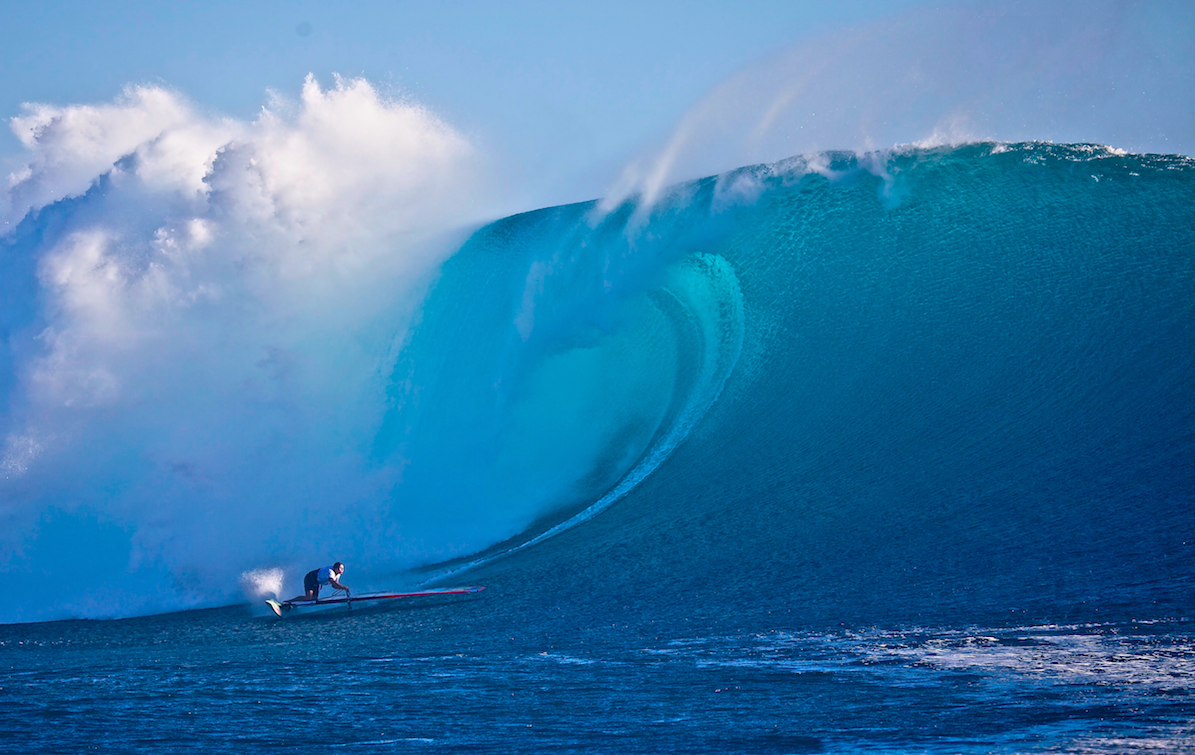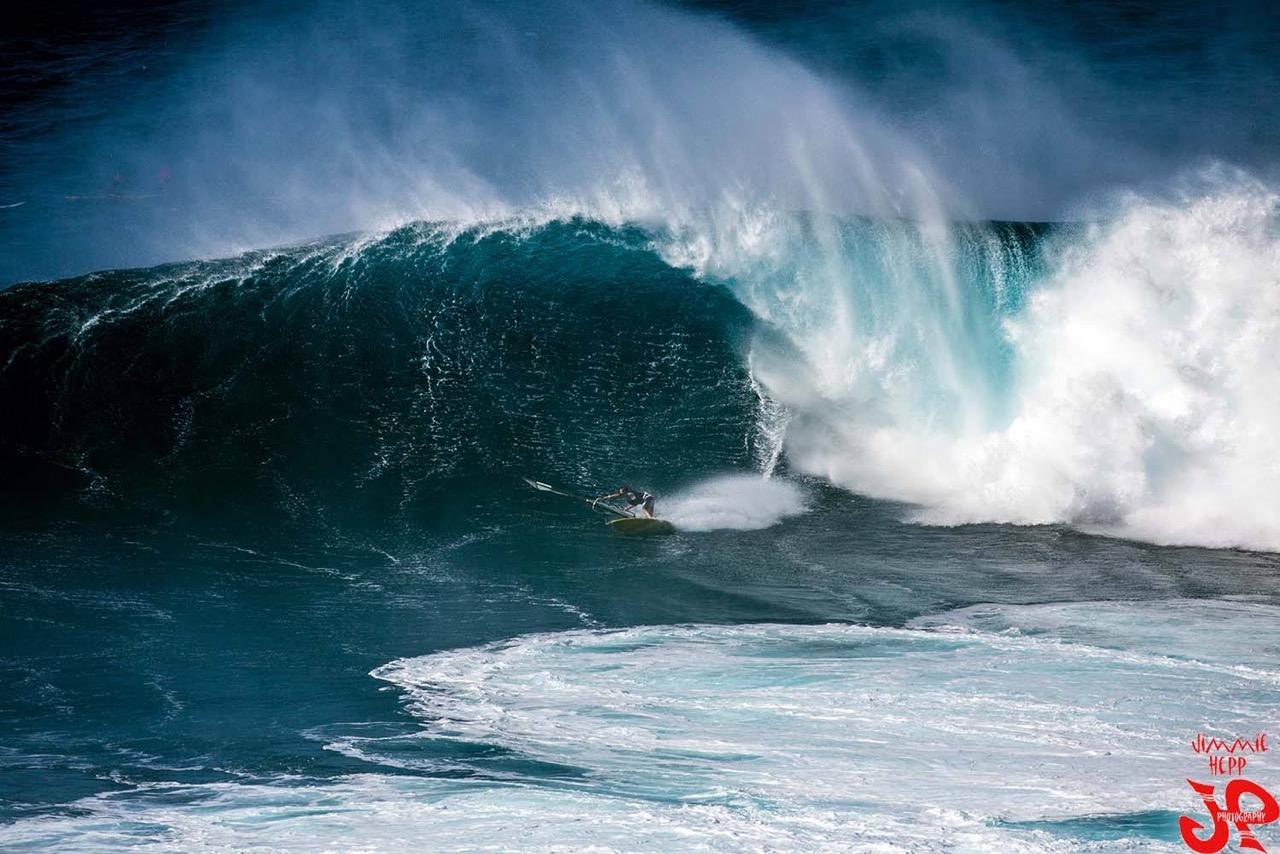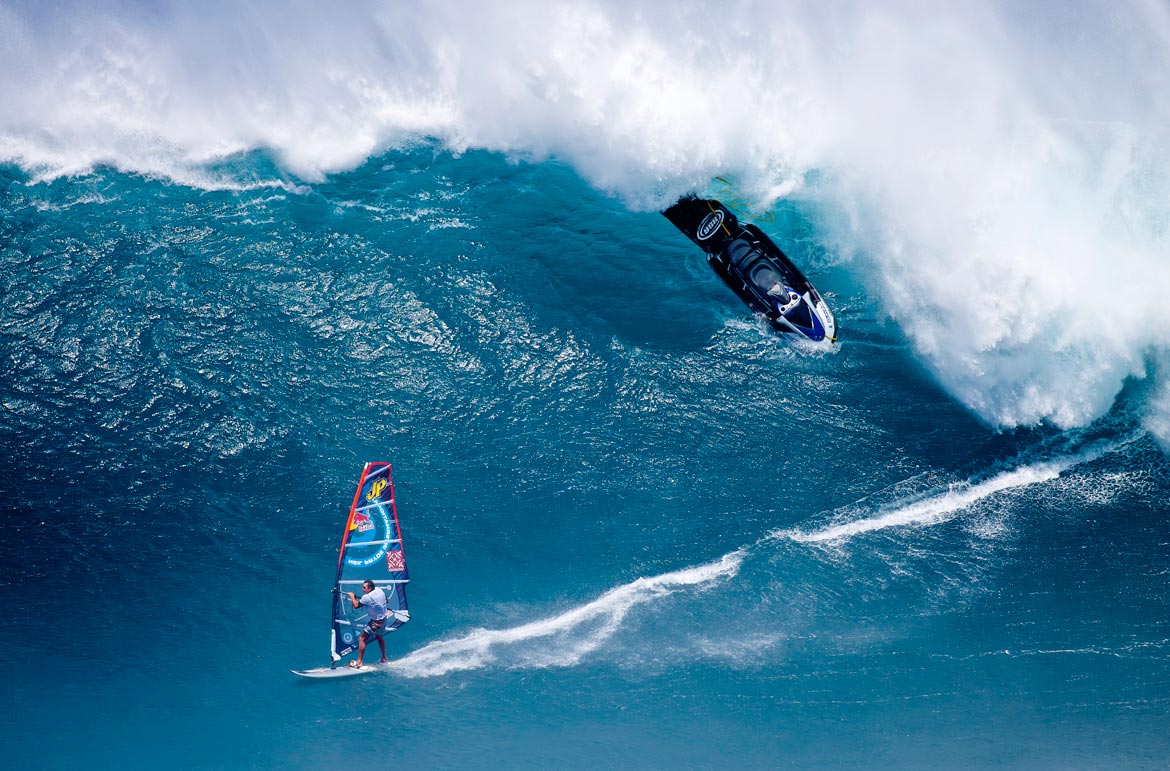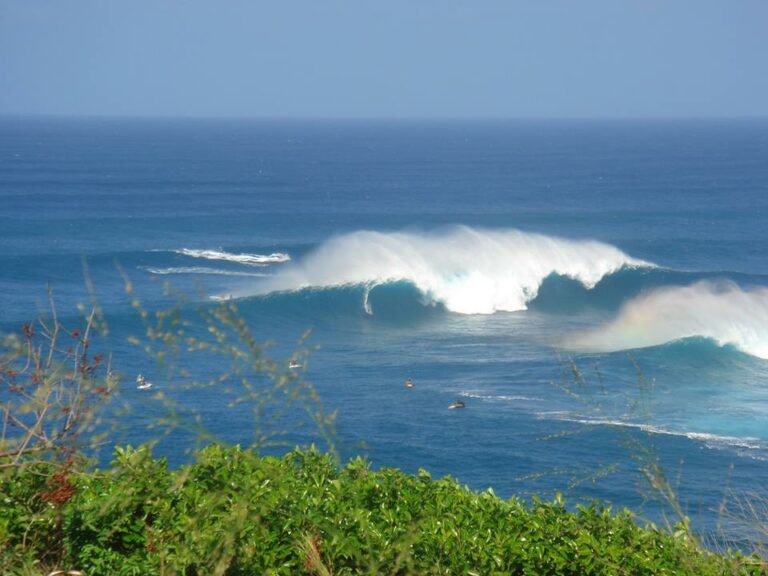Understanding Fear
-

Jason Polakow never seems to be scared of a big wave or two!
-

Marcilio Browne at Jaws
-

Sometimes it's not a bad idea to be a little scared!
Understanding Fear
Waves can be scary. Whether they are two-foot or twenty-foot, if it feels big and scary to you then that fear is going to be a major stumbling block in feeling comfortable on the water and improving your wavesailing.
Dr. Lenny Wiersma, a professor at the Department of Kinesiology, California State University, Fullerton (USA) and big-wave surfer, joins Boards to advise you on how to get over the fear of waves.
The suspense of wiping out on a wave is often worse than the wipe-out itself.
Understanding Fear
“Imagine standing on your board as a large wave crests towards you with the energy of the entire ocean behind it. Imagine staring up the face of the wave while the lip curls directly overhead. Imagine being sucked into the wave and driven down underwater as the turbulence and power of the wave spins you below the ocean surface.
“Accompanying these images is likely a strong sense of fear and discomfort associated with being in large waves. This fear can immobilise you and make a once-easy task seem impossible. It can cloud your judgment and lead to bad decisions. Worst of all, it can keep you from trying to launch into large waves in the first place.
“It is important to note that while some windsurfers regularly sail in waves exceeding twenty feet at places all around the world, fear of large waves is relative to the size of a wave to which a person is comfortable. So what may be comfortable to one wavesailor—say, a ten-foot wave—may paralyse another surfer with fear. And if you are used to windsurfing in a lake and are considering moving to an ocean setting, no matter how large the waves are, you will need to deal with the accompanying fear and uncertainty that likely goes with that transition.
“First, let’s first put this fear into perspective. No waterman should ever engage in aquatic activities without a healthy—and constant—respect for the power of the ocean. Along with this respect comes a certain amount of fear that keeps you aware of your surroundings and keeps your body ready to respond to unexpected situations. Over-comfort in the ocean leads to complacency, and over-confidence leads to mistakes that can be fatal. Fear of big waves therefore serves an important purpose and you should embrace that as part of the experience of sailing. And let’s be clear about one thing: there is no such thing as a fearless big-waverider. The power of the ocean, especially in large surf, is greater than almost anything else one can face in his life.
“The physiological basis for fear starts in the brain. Essentially, fear occurs when a person feels powerless in the face of some threat. In the presence of a perceived threat, the brain signals for the “fight or flight” response, in which a series of responses is elicited in the body to prepare itself to survive. The fight or flight response is essential for our survival, but, if not kept in check, can be debilitating, preventing you from keeping a clear head and making rational decisions. Dealing with fear, therefore, requires you to increase the perception of your ability to be safe in large surf and to see ocean conditions as challenges rather than threats. The goal is to attain a healthy balance between fear and comfort that allows you to tackle challenges for which you are otherwise prepared.
“Interestingly, many big-waveriders do not have exceptional technique; put some big-waveriders in normal sized waves, and they don’t stand out from anybody else. The ability to gain a certain level of comfort in dangerous ocean conditions is more of a prerequisite to riding large waves than the surfing skill itself. As such, based on my research, I recommend considering the following strategies of overcoming the fear of big-wave sailing.
Tips on Overcoming Big-Wave Fear…

